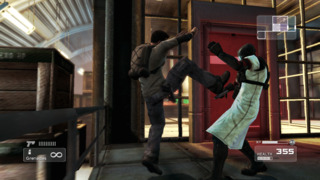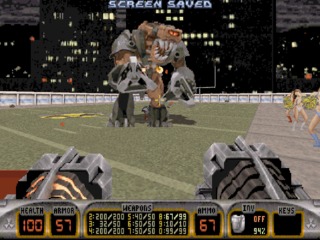Overview

Today the term 2.5D is primarily used to described games that combine both modern 3D polygonal graphics and traditional 2D game-play. For example, a platformer or fighting game that uses 3D models, but with a fixed sideways perspective. However, 2.5D can be used to describe any game that combines both 2D and 3D techniques together.

The term 2.5D has also been used to describe early first-person shooters that use 2D sprites instead of 3D models, such as Doom & Duke Nukem 3D. Usually referring to the actually engine used to make them. Since the 3D perspective was faked due to limitations with the technology of the time.

Games that utilize axonometric projection or more commonly known as “isometric” graphics – like SimCity 2000 – can also sometimes be described as 2.5D, since they're essentially creating a fake 3D perspective with 2D graphics.
Modern Use
Today, the term "2.5D" is normally associated with games that use three-dimensional polygonal graphics combined with a fixed 2D perspective. The moment-to-moment gameplay will primarily take place on a 2D plane. Even if the mechanics of the engine allow for variations and scripted sequences, the player will seldom have direct control over the camera or character movement in 3D space.
Older Uses
In the past, the term "2.5D" was more commonly used to refer to a variety of pseudo-3D graphical techniques that attempted to simulate three-dimensional graphics without the use of 3D polygons, including techniques in older games that feature 2D character sprites within a 3D environment. The most common technique was sprite scaling, which included Super Scaler technology (for various Sega arcade games, from Hang-On to Galaxy Force), Mode 7 (for various SNES games), ray casting (for first-person shooters such as Doom and Duke Nukem 3D), sprite-based third-person or first-person perspectives, and sprite-based stereoscopic 3D. Other forms of 2.5D included vector graphics, isometric graphics, parallax scrolling, pre-rendered graphics, and cel-shading.
Coincidentally, the term "2.5D" is also used in AI pathfinding, where that usage refers to an entity that uses a two-dimensional grid with connecting nodes to navigate areas which may change their height axes.
Log in to comment